September 7 - Photographing Wildlife
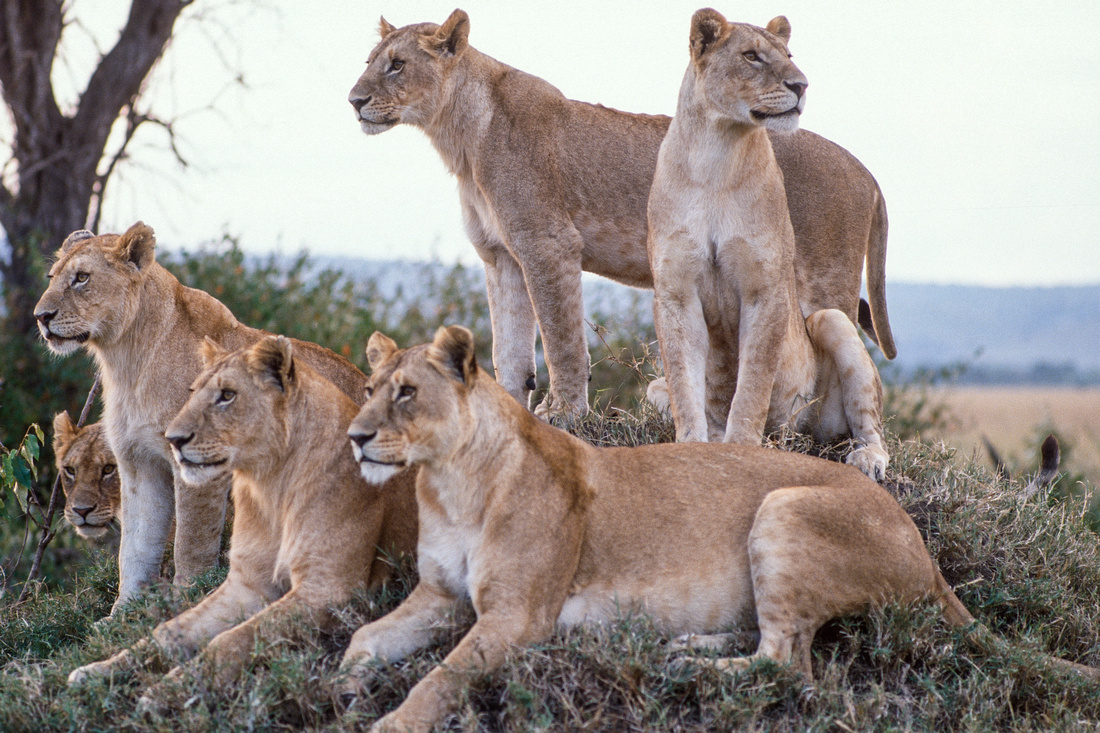 W1-8914225 lionesses
W1-8914225 lionesses Seeing, viewing, watching wildlife is an exciting, often heart-thumping experience.
Seeing, viewing, watching wildlife is an exciting, often heart-thumping experience.
Being able to capture photos of them is even more thrilling. Many of the suggestions that I wrote about in my previous blog also apply to wildlife photography. But it is not necessary to visit exotic locations like this to enjoy this endeavour.
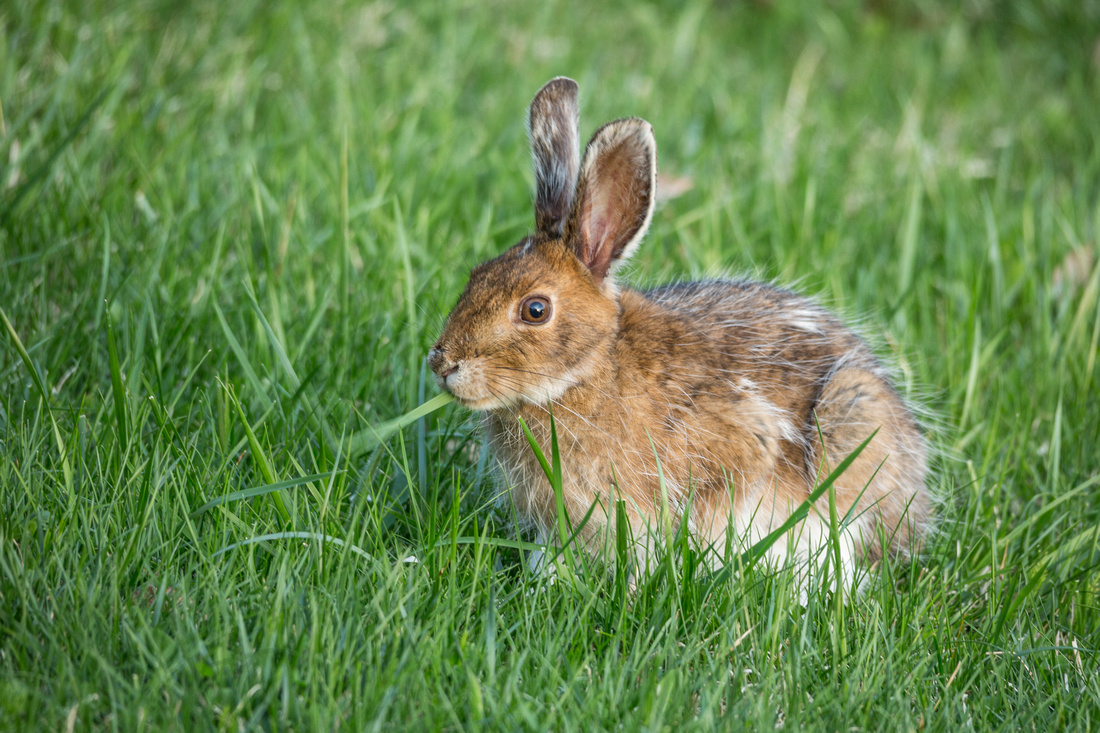 W2-W_15_0019Snowshoe hare (Lepus americanus) morphing to summer coat, showing remnants of winter fur, Sudbury, Ontario, Canada
W2-W_15_0019Snowshoe hare (Lepus americanus) morphing to summer coat, showing remnants of winter fur, Sudbury, Ontario, Canada
You can often find wildlife right in your own yard, as I did with this Snowshoe Hare.
As in people photography, it is important to be aware of your backgrounds and edges of the frame.
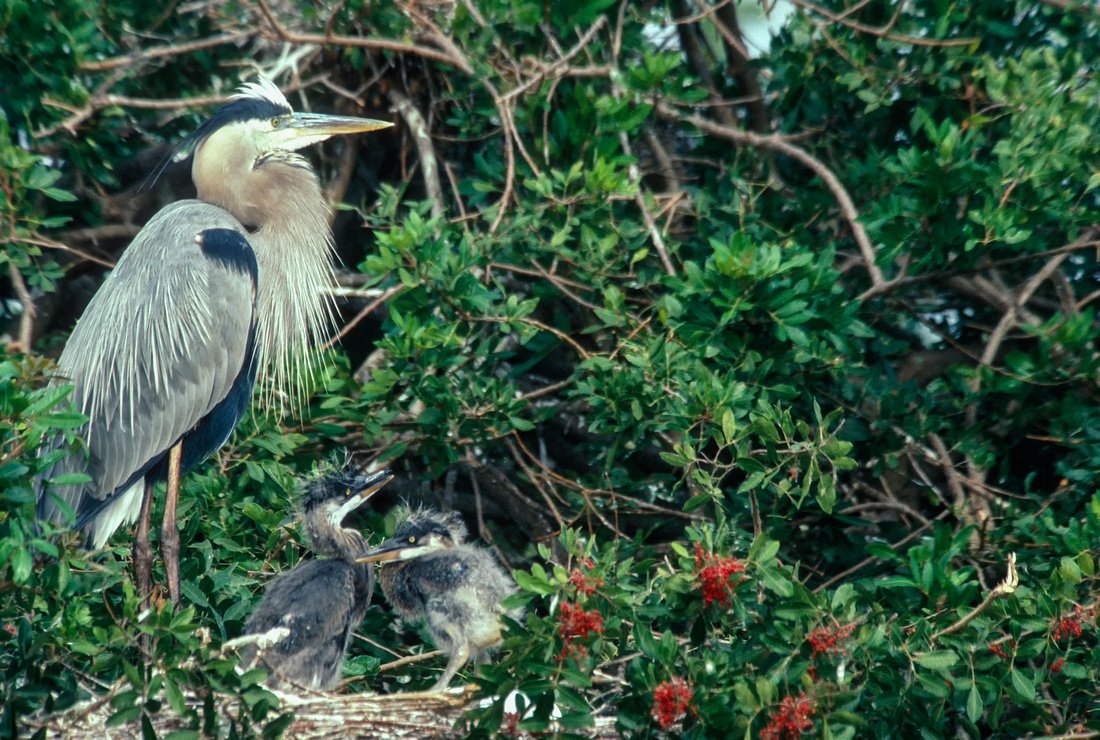 W3-03000564Great Blue Heron (Ardeaherodias)
W3-03000564Great Blue Heron (Ardeaherodias) Though this is an interesting shot of Great Blue Herons at their nest, it's too busy, too confusing.
Though this is an interesting shot of Great Blue Herons at their nest, it's too busy, too confusing.
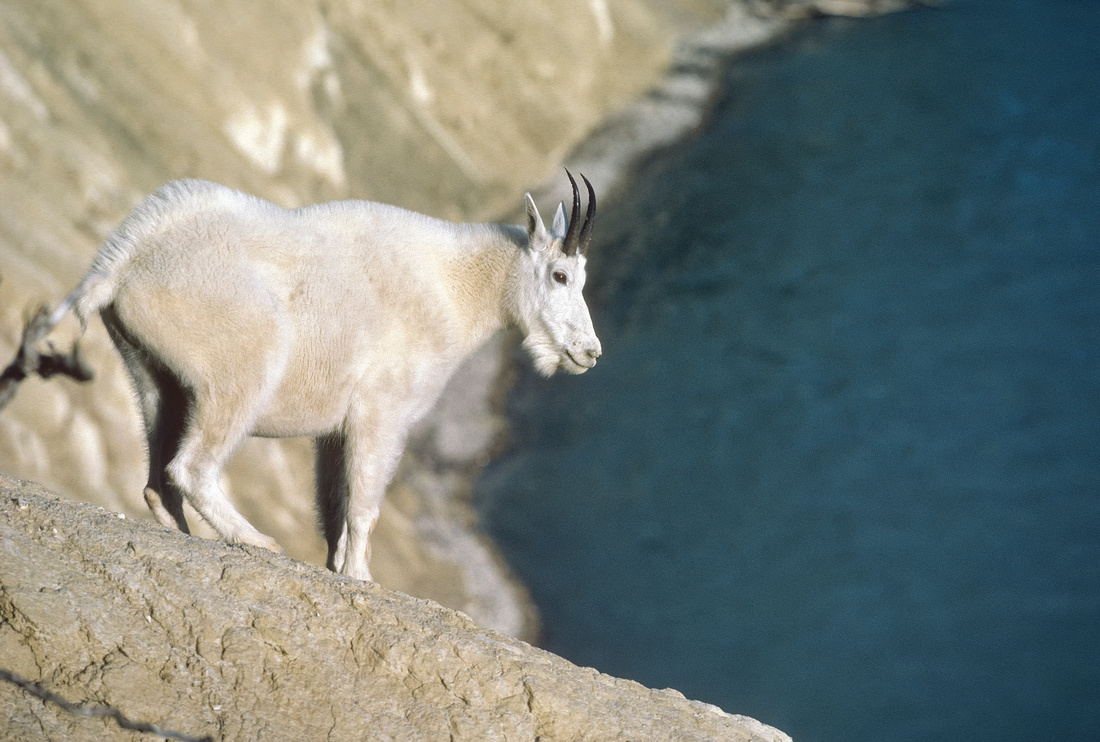 W4-860638Mountain Goat (Oreamnos americanus)
W4-860638Mountain Goat (Oreamnos americanus) Look for a background that clearly shows the animal, but also illustrates its environment, as in this image of a Mountain Goat in Jasper National Park, or the following photo of one in the rugged mountain country of Montana's Glacier National Park.
Look for a background that clearly shows the animal, but also illustrates its environment, as in this image of a Mountain Goat in Jasper National Park, or the following photo of one in the rugged mountain country of Montana's Glacier National Park.
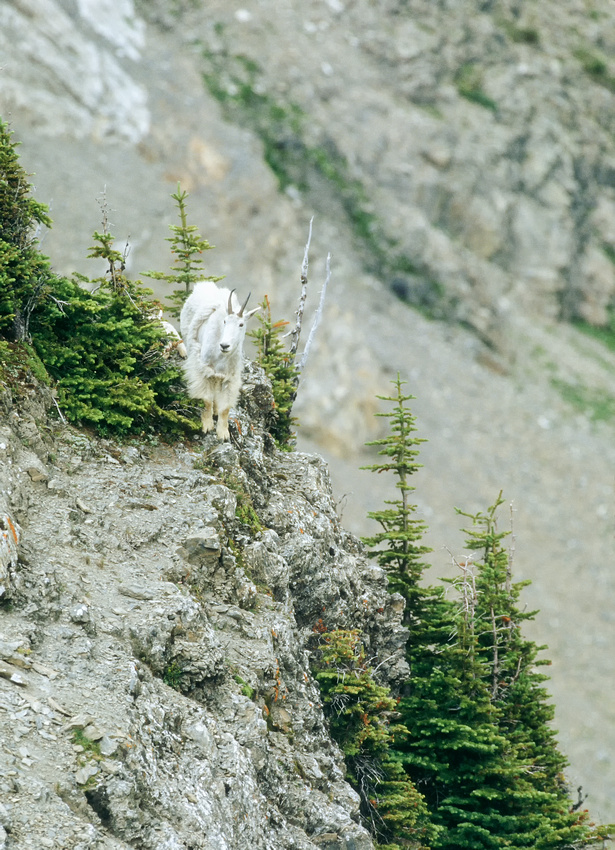 W5-931289
W5-931289
 W6-891301
W6-891301 This photo shows the Impalas' habitat in the grasslands of Kenya's Masai Mara National Park.
This photo shows the Impalas' habitat in the grasslands of Kenya's Masai Mara National Park.
For wildlife portraits, try to keep the background simple and unobtrusive.
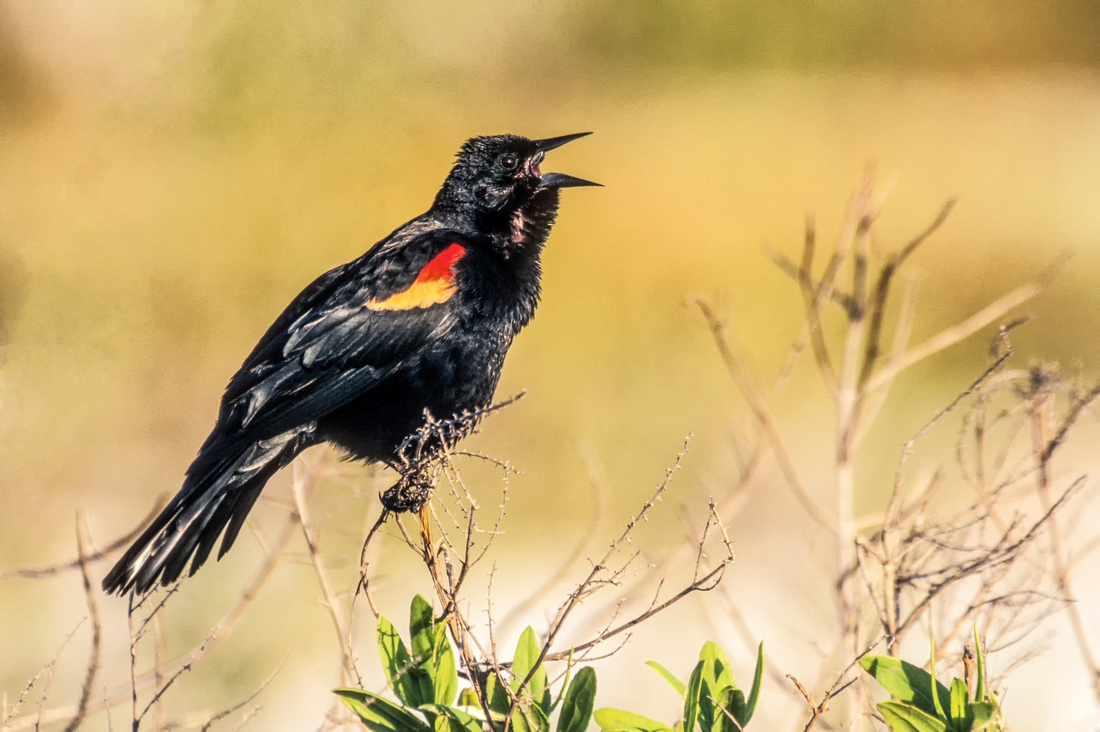 W7-03000557Red-wing Blackbird, male, mating call, ( Agelaius phoeniceus), Fort DeSoto, Florida
W7-03000557Red-wing Blackbird, male, mating call, ( Agelaius phoeniceus), Fort DeSoto, Florida For this photo of a Red-winged Blackbird, I used a shallow depth-of-field to defocus what was behind the subject.
For this photo of a Red-winged Blackbird, I used a shallow depth-of-field to defocus what was behind the subject.
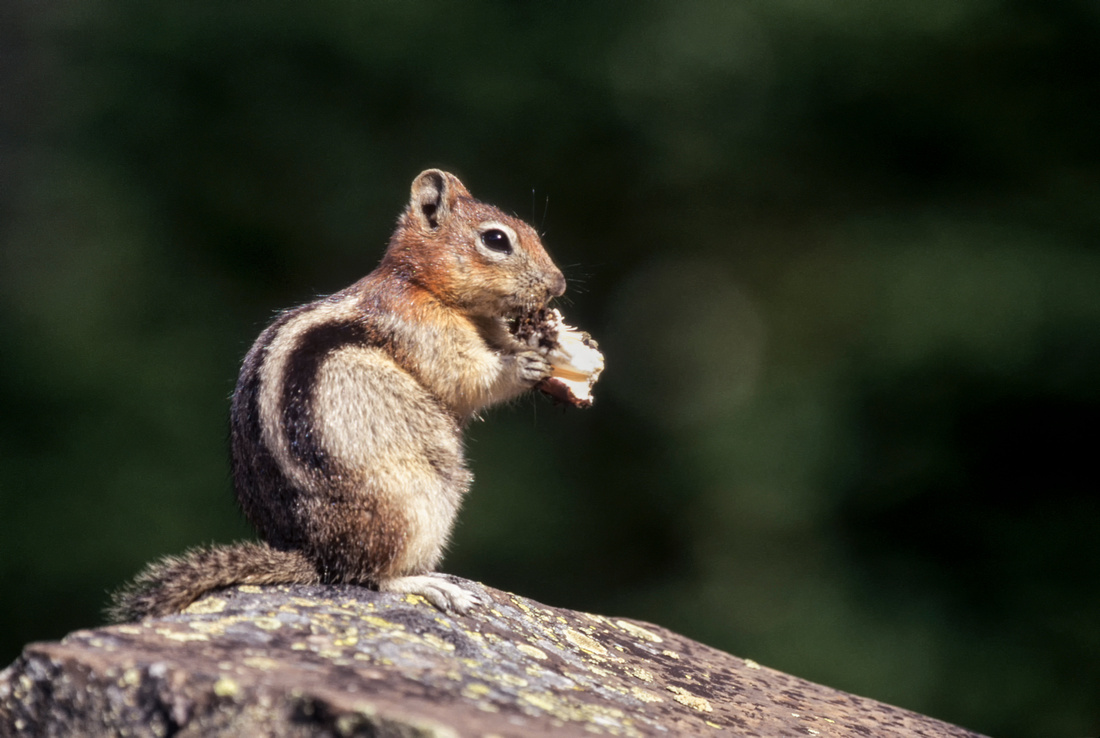 W8-01001041Golden-mantled Ground Squirrel (Spermophilus lateralis), Peter Lougheed Provincial Park, Alberta
W8-01001041Golden-mantled Ground Squirrel (Spermophilus lateralis), Peter Lougheed Provincial Park, Alberta For this photo of a Ground Squirrel in Peter Lougheed Provincial Park I took advantage of the camera's limited dynamic range, so the shadowed background rendered almost black, even though my eye could see detail there.
For this photo of a Ground Squirrel in Peter Lougheed Provincial Park I took advantage of the camera's limited dynamic range, so the shadowed background rendered almost black, even though my eye could see detail there.
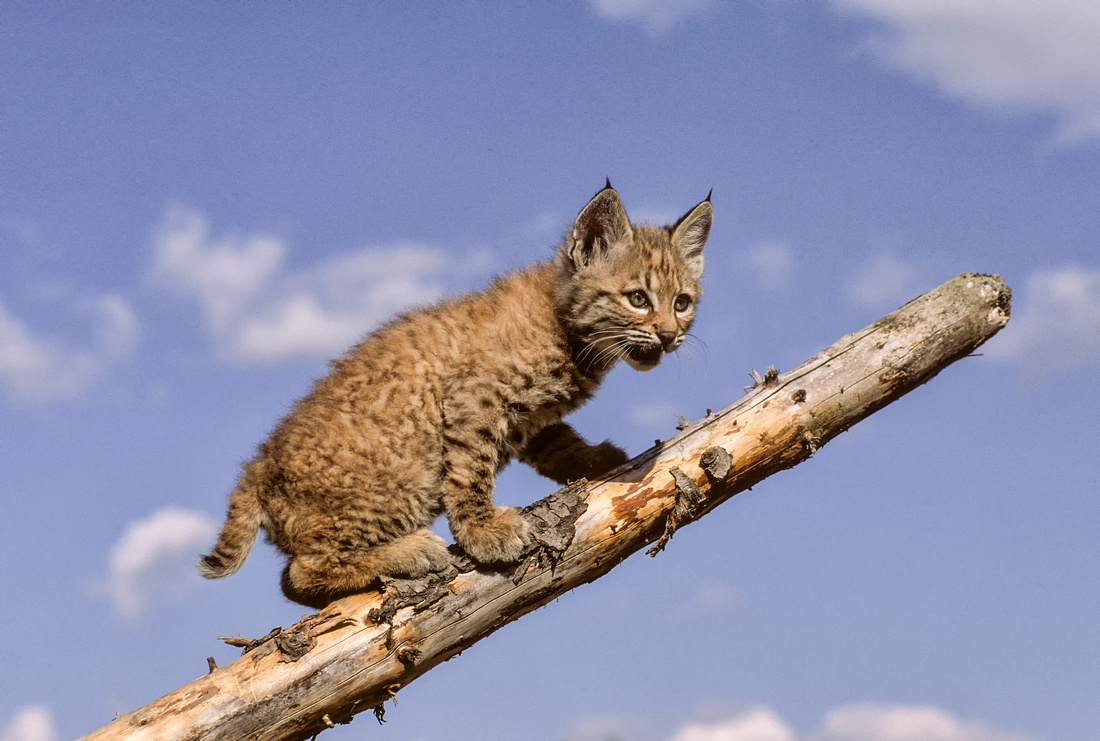 W9-01000314Young Bobcat (Lynx rufus) on log - captive species
W9-01000314Young Bobcat (Lynx rufus) on log - captive species Here I used a low point of view so that only sky made up the background. Thus I eliminated the trees in back.
Here I used a low point of view so that only sky made up the background. Thus I eliminated the trees in back.
In wildlife portraits, front light is often best, making for a clear image of the species.
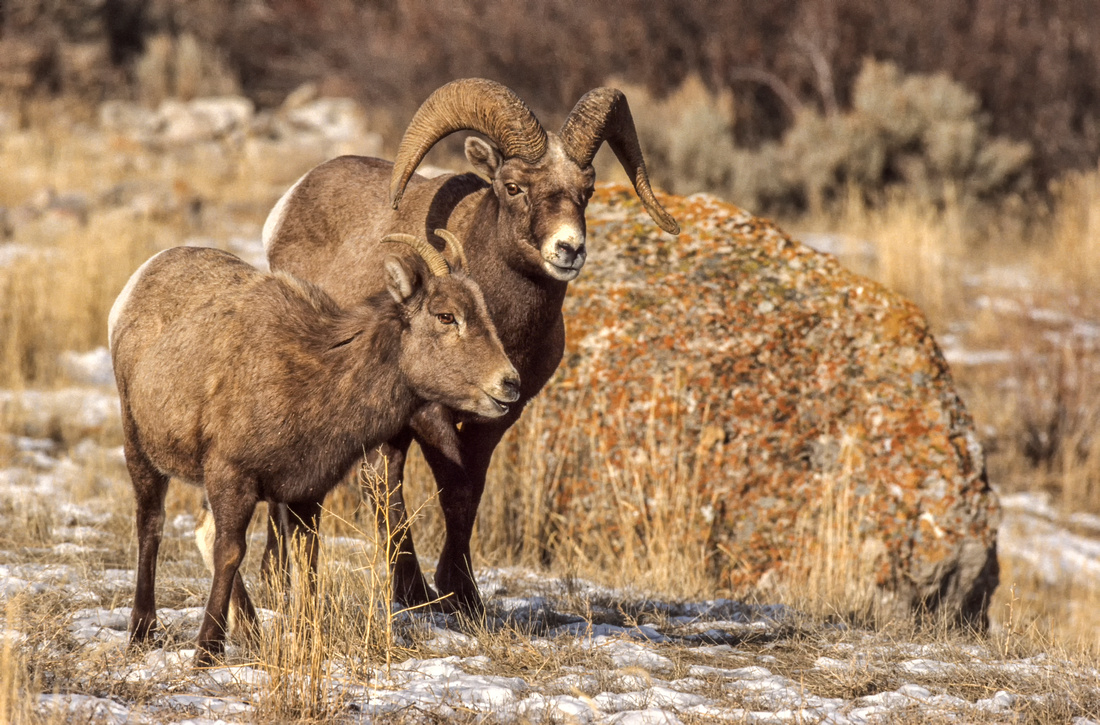 W10-01000994Bighorn Sheep, ewe and ram (Ovis canadensis), Yellowstone National Park, Montana
W10-01000994Bighorn Sheep, ewe and ram (Ovis canadensis), Yellowstone National Park, Montana
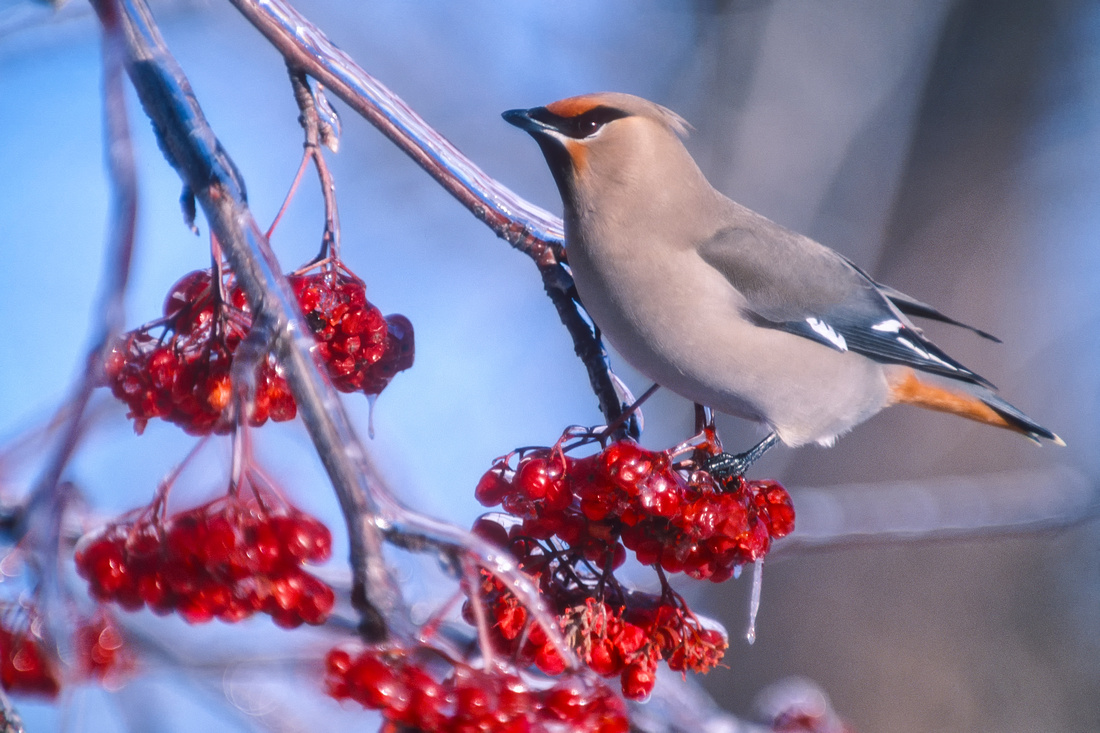 W11-03000191Bohemian Waxwing (Bombycilla garrulus)
W11-03000191Bohemian Waxwing (Bombycilla garrulus) These photos, of Bighorn Sheep in Yellowstone and a Bohemian Waxwing in Sudbury, are examples of this use of light.
These photos, of Bighorn Sheep in Yellowstone and a Bohemian Waxwing in Sudbury, are examples of this use of light.
Sometimes side light can add drama to an image and illustrate the texture of the skin, as in this shot of Elephants in Kenya.
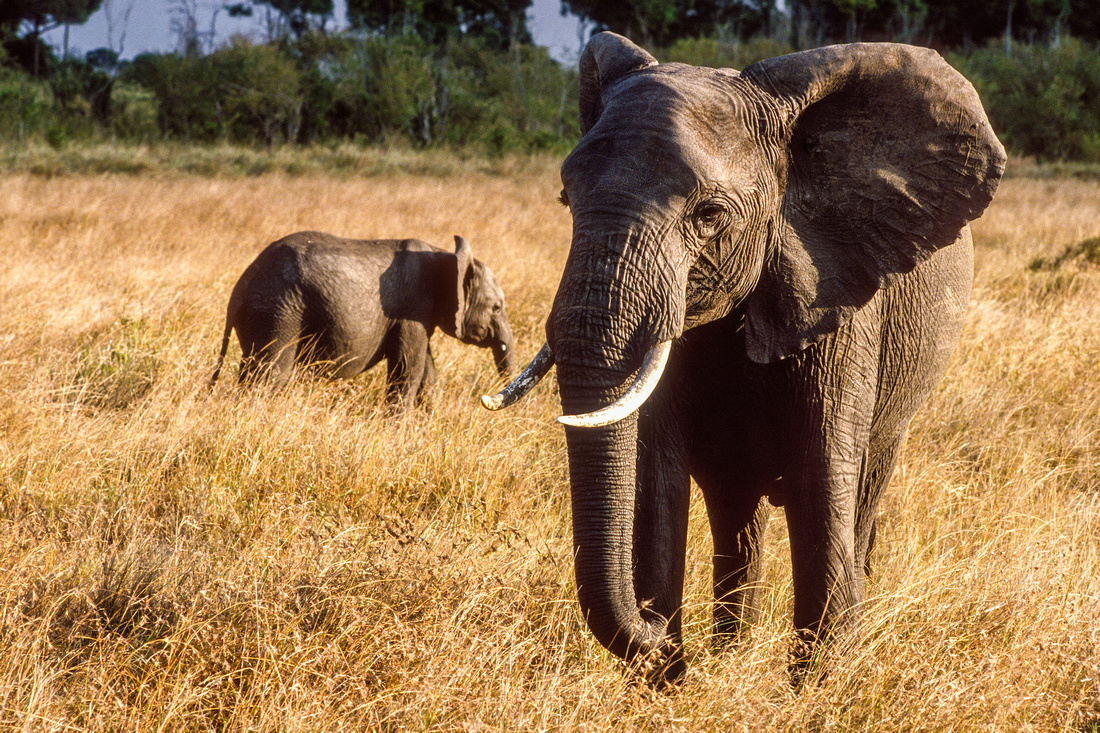 W12-02000025African elephant
W12-02000025African elephant
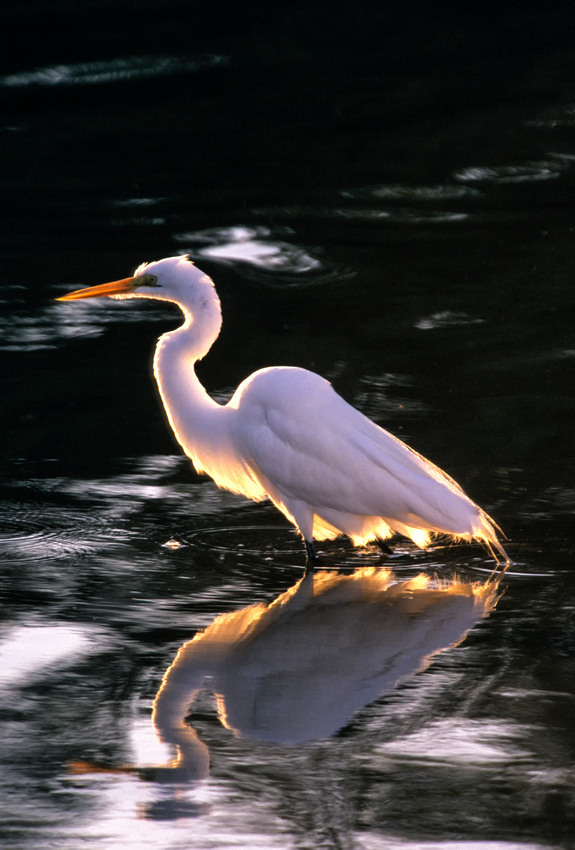 W13-03000548Great Egret (Ardea alba), Fort Desoto, Florida
W13-03000548Great Egret (Ardea alba), Fort Desoto, Florida
Even more dramatic is back light, which creates this rim lighting around the Great Egret at Fort DeSoto in Florida.
To me, nothing photographic is more exciting than capturing images of creatures in the wild, like this large caribou in Alaska's Denali National Park...
 W14-881179
W14-881179
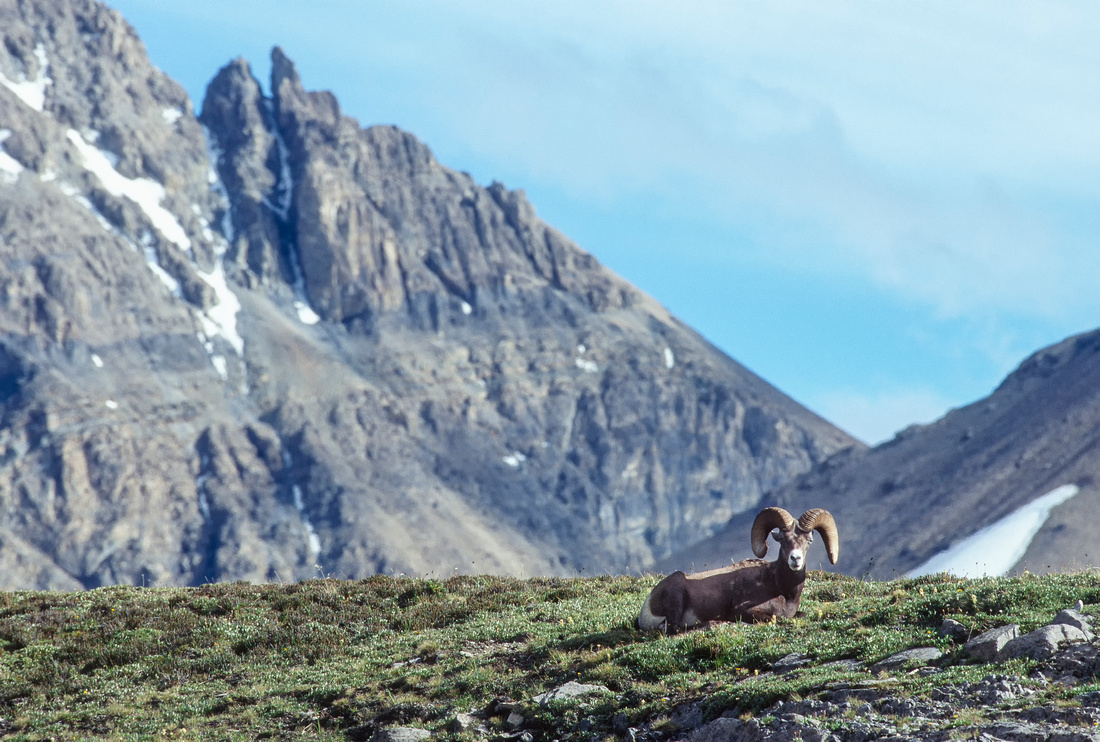 W15-970773 (2)
W15-970773 (2) ... or coming upon this Bighorn Ram while hiking Wilcox Pass in Jasper National Park.
... or coming upon this Bighorn Ram while hiking Wilcox Pass in Jasper National Park.
But be safe. Do not approach wild animals too closely. Take environmental photos or use a long telephoto lens from a distance.
 W16-W_16_0030crop
W16-W_16_0030crop He make look cute, but he is still wild and unpredictable.
He make look cute, but he is still wild and unpredictable.
Stay around to make more wildlife photographs!